Alaska Economic Trends
Alaska Economic Trends is a monthly magazine that covers a range of economic topics.
Sign up for a free electronic subscription. 
Sign up for a paid print subscription.
Alaska Economic Trends are searchable from 1961 to the present using the Trends search page. The search can include any combination of the following: Key Words, Date Range, Author, Category
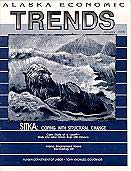
Sitka, located on the west side of Baranof Island on the outside waters of the Southeast Alaska panhandle, is a community steeped in history. A former Russian and U.S. territorial capital, and a center of Tlingit culture, Sitka has a rich heritage and a relatively strong and diverse economy. Fishing, health care, education, tourism and government all play important roles in the local economy.
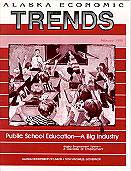
Local public education is one of Alaska's largest industries. Alaska's local school districts, combined, represent one of the state's biggest employers. Jobs with local school districts in kindergarten through 12th grade number over 20,000--nearly seven percent of all wage and salary jobs in Alaska.
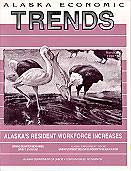
A large number of nonresident workers are hired in Alaska every year, creating a negative impact on the Alaska economy. Employers hire nonresidents to work in Alaska for many legitimate reasons. However, too often employers assume that no qualified workers are available in Alaska, and therefore, they don't even attempt to hire here. Through information, education and recruitment efforts, the Alaska Department of Labor (AKDOL) is continually working to increase the employment of Alaska workers in jobs currently filled by nonresidents.
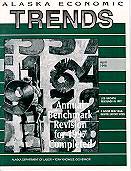
Each January, the Alaska Department of Labor (AKDOL) revises the nonagricultural wage and salary employment data series in a procedure called benchmarking. The 1997 benchmark revised the employment estimates for 1996 and 1997. Those revised estimates are published in this issue of Alaska Economic Trends.
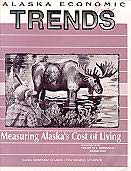
How expensive is it to live in Alaska? How much has Alaska's cost of living increased? These are two of the most frequently asked questions of the Alaska Department of Labor's Research and Analysis Section. In answer to these questions, this article provides some of the latest cost-of-living measurements available for Alaska and explains the uses and limitations of these data.

At the turn of the century, gold discoveries precipitated a stampede of fortune seekers to the Bering Strait region along Alaska's northwest coast. Thousands of wouldbe miners landed at a shoreline location that was to become the community of Nome. In 1900, according to the U.S. Census, the city of Nome was the largest settlement in Alaska, with 12,488 people.
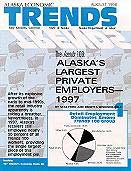
For the seventh year in a row, Carr Gottstein Foods, a grocery chain, remains Alaska's single largest private sector employer. Carr's 1997 employment was down slightly from the previous year, however, with 3,192 workers.
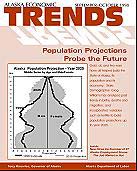
The discovery of gold, World War II, the Korean War, construction of the Trans-Alaska Oil Pipeline, the decision to invest oil royalties and the fall of oil prices all have contributed positively or negatively to the Alaska economy and influenced the development of the present population of the state.

In an era of sharp competition to recruit both valued customers and talented workers, the smart business is constantly looking for an advantage. Many businesses are finding that competitive advantage through the Alaska Employment Service (AES) in the Alaska Department of Labor's Employment Security Division.

A whiff of past construction booms is in the air. Many more road detours seem to plague communities around the state. New hotels, office buildings and other structures are going up without much attention, sometimes in the most unlikely places. New homes and subdivisions appear to be popping up everywhere. And more friends, family members and acquaintances are headed off to the North Slope to work on one of many construction projects.
